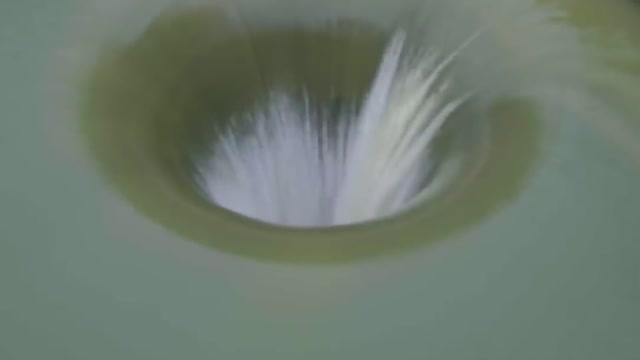Premium Only Content

The Most Dangerous Hole on Earth
The Most Dangerous Hole on Earth
Wishing well these holes are definitely not. Instead of being a repository of thousands of coins and
hopeful wishes, something quite sinister lies at the bottom of these holes; death.
From hell’s gate on earth to a beautiful dive spot that has claimed its fair share of lives, here are 10 of
the most dangerous holes on earth.
Number 10. The Gates of Hell
In the hot, expansive Karakum Desert in Turkmenistan, near the small village of Darvaza, is a hole 230
feet wide that has been on fire for over 40 years. Its official name is the Darvaza gas crater, however,
locals call it by a more ominous name; The Gates of Hell. Its fiery glow can be seen for miles around.
The crater was created in 1971 entirely by accident when a Soviet drilling rig punched into a massive
underground natural gas cavern, causing the ground to collapse and the entire drilling rig to fall in.
Having punctured a pocket of gas, poisonous fumes began leaking at an alarming rate.
To head off a potential environmental catastrophe, the Soviets set the hole on fire, figuring it would stop
burning within a few weeks. Decades later, and the fiery pit is still going strong, and there’s no sign of it
slowing down.
Amazingly, despite the crater’s foreboding name and ever-present flames, has become quite the
popular tourist attraction. People still trek into the desert to witness the site in all its blazing glory. In
fact, the nearby desert has already become a popular camping ground.
Number 9. The Devil’s Sinkhole
A registered National Natural Landmark since 1985, the Devil’s Sinkhole plunges a remarkable 400 feet
deep. It is the largest single-chambered cavern and third-deepest sinkhole in the state. It was created
when an underground cavity suddenly collapsed.
There is archeological evidence that the sinkhole was once considered sacred by Native Americans, as
locals have found stalactites, arrowheads and other treasures from the area. Evidence from around the
site indicates that the sinkhole may have been used for burial of the dead, as Native Americans
considered sinkholes as well as caves, crevices, springs and seeps to be avenues to the underworld and
the earth gods. In much later times, the sinkhole was a gathering place for cowboys and cavers, who
etched their names and other graffiti into the limestone walls.
Three people are known to have died by falling into the sinkhole in modern times, with one in 1900,
another in 1960 and the most recent in 1972.
Today the Sinkhole is a summer home to one to four million Mexican Free-Tailed Bats. At sundown
visitors can begin to see a few bats emerge from the sinkhole, until they become a black swirling mass of
millions of bats flying into the evening sky.
Number 8. The Kimberly Mine
In 1866, Erasmus Jacobs found a tiny white pebble on the De Kalk farm on the banks of the Orange River
near Hopetown in the former Cape Colony. That pebble turned out to be a 21.25-carat diamond. Thus
began the great diamond rush in the area, and the advent of the Kimberly Mine.
From mid-July 1871 to 1914 up to 50,000 miners dug the hole with picks and shovels, yielding 6000
pounds or 13,600,000 carats of diamonds. Also known as the big hole, it has a surface of 42 acres and is
1519 feet wide. It was excavated to a depth of 790 feet, but then partially infilled with debris reducing
its depth to about 705 feet. Since then it has accumulated about 130 feet of water, leaving 574 feet of
the hole visible.
Today the Big Hole is part of a larger museum. This is a unique open-air museum with viewing platforms
and a wide selection of original houses, offices, and shops. The museum boasts Kimberley’s oldest
house, which was imported from England in 1877, The Digger’s Rest pub, Barney Barnato’s boxing
academy, a tobacconist shop, a reconstruction of the De Beers’ homestead, and mock diamond diggings.
Number 7. The Glory Hole
The Glory Hole is located at the Monticello Dam at Lake Berryessa in Northern California. This gigantic
hole acts as the lake’s spillway.
Technically known as the Morning Glory Spillway, the glory hole is just how the locals like to call it.
When the dam reaches capacity, the spillway swallows water at a rate of 48,800 cubic feet per second,
emptying about 700 feet away through an enormous concrete pipe. If the drain is operational, the lake
suddenly becomes a very dangerous place to swim. In 1997, a UC Davis graduate student was pulled into
the glory hole while swimming and drowned.
The dam and spillway were both constructed between 1953 and 1957, choking off Putah Creek and
-
 LIVE
LIVE
LFA TV
22 hours agoTARIFF TRADE WAR! | LIVE FROM AMERICA 2.3.25 11am
4,744 watching -
 LIVE
LIVE
Caleb Hammer
1 hour agoProfessional Redditor Treats His Wife Like A Pet | Financial Audit
236 watching -
 36:07
36:07
Rethinking the Dollar
55 minutes agoMonday Morning Check-In | Tit-for-Tat Trade Wars: Why Gold Is Still Winning
-
 56:02
56:02
Randi Hipper
1 hour agoBITCOIN AT CRITICAL LEVELS AS MARKET CRASHES! LATEST PRICE UPDATE HERE
3.99K1 -
 2:22:37
2:22:37
Matt Kohrs
10 hours agoMARKET CRASH! Trump's Trade War Bloodbath || The MK Show
24.6K6 -
 1:16:40
1:16:40
Graham Allen
3 hours agoCanada WILL LOSE!! Trudeau Enters Trade War With The US! + Zelensky Is Missing 102 BILLION?!
56.6K55 -
 59:17
59:17
Kyle Fortch
2 hours ago $0.15 earnedJon Kilmer: Touring With Kendrick Lamar, Steve Aoki & mike, Creating A Brand | THE ONE SHEET S1E2
3.14K1 -
 38:34
38:34
BonginoReport
5 hours agoTrump Obliterates USAID—the CIA's Piggy Bank (Ep.131) - 02/03/2025
66.6K140 -
 LIVE
LIVE
Wendy Bell Radio
6 hours agoBeware The Wrath Of A Patient Man
12,396 watching -
 1:23:17
1:23:17
Game On!
12 hours ago $0.52 earnedHappy Super Bowl Week! Our Top 10 Super Bowl Props to Bet!
11.9K1